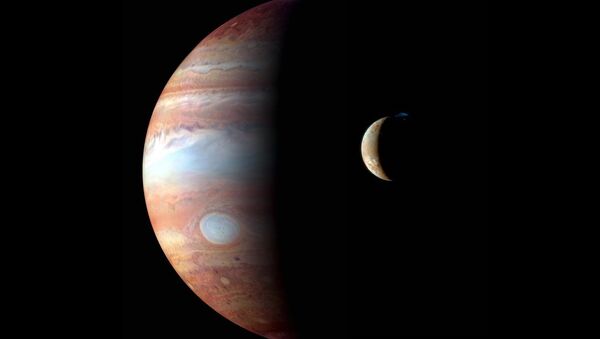A 30-seconds video shot on March 17 by Austrian amateur Gerrit Kernbauer shows the red giant emitting a sudden flash of light from its right side.
That, experts think, signals that some sort of explosion took place on the planet's surface.
Kernbauer shot the video using a camera mounted on a Skywatcher Newton 20-centimeter telescope.
"The quality was not the best, so I hesitated to process the videos," he wrote on YouTube. "Nevertheless, 10 days later I looked through the videos and found this straight light spot that appeared for less than one second on the edge of the planetary disc."
To be sure that the blip in the video was real and not due to some equipment malfunction, he later compared his footage with that taken by another amateur with a 28-centimeter telescope in Ireland.
To be detected from Earth with such simple instruments, the explosion — most likely due to a collision with an asteroid or comet — must have been unusually powerful.
Still, this does not necessarily mean that the celestial object that hit Jupiter was particularly large. In fact, it was probably no more than some tens of meters in diameter.
According to Slate, when it comes to cosmic impacts, the mass of the target is more important than the mass of the cosmic missile itself.
"Jupiter has ferocious gravity, and velocity is critical here, " the article reads. "The energy released by an object slamming into another depends linearly on the mass (double the mass, double the energy), but on the square of the velocity: double the velocity, quadruple the energy.
"An object will hit Jupiter with roughly five times the velocity it hits Earth, so the impact energy is 25 times as high.
"The asteroid that burned up over Chelyabinsk, Russia, in 2013 was 19 meters across, and it exploded with the energy of 500,000 tons of TNT. Now multiply that by 25, and you can see how it doesn't take all that big a rock to hit Jupiter for us to be able to see it from Earth."
It is improbable that any space agency will further investigate the incident, since the impact was still of a rather limited scale.
Furthermore, these impacts are relatively frequent on Jupiter, although it is not as frequent to be able to capture them on camera.





